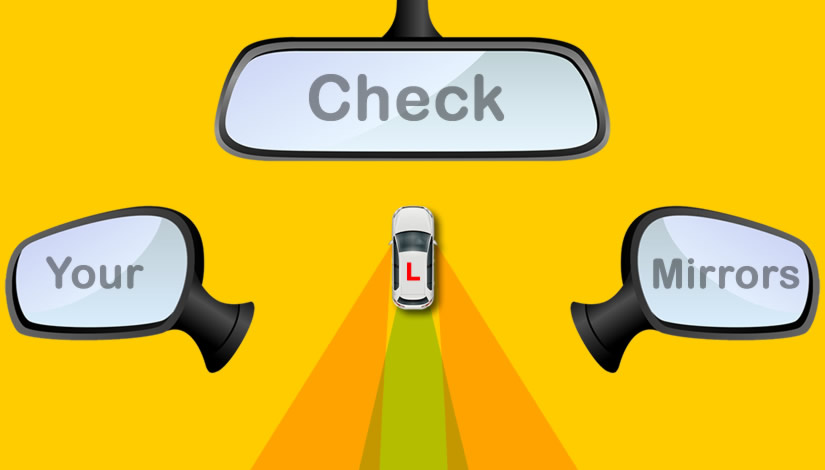When Should You Check Your Mirrors?
While driving, you should check your mirrors before:
- Opening any car door
- Any change in speed is made
- Any change in direction is made
Being a learner driver, knowing when to check your mirrors requires a lot of practice up to the point where you do it automatically without having to think about it. We’ll now let’s explain these situations in more details below.
Opening Any Car Door
Before you or any passenger opens a car door, check the internal mirror and relevant door mirror before doing so. You may also need to look over your left or right shoulder into the blind spot (the area that cannot be seen in your mirrors) to ensure all is clear.
This is of particular importance if you’re opening your door into the road to ensure there’s no passing vehicles or cyclists before opening. If opening your door onto the pavement, check your mirrors and take a look over your shoulder to ensure there’s no pedestrians that you’ll open your door into.
Any Change in Speed
Any changes in speed means that you should check your mirrors before moving off from a stationary position or before slowing down to a stop. While driving, you should also check your mirrors before accelerating, or before slowing down.
Any Change in Direction
You should check your mirrors before making any change in direction. There are numerous situations where you’ll need to change direction and some of them will include making a left or right turn, T-junctions, roundabouts, lane changes or overtaking.
Essentially, any situation that involves you deviating from following the road ahead requires you to check the internal mirror, followed by the corresponding side mirror.
How Do I Remember to Check the Mirrors?
As we said, it really comes down to practice. It’s important that you do it properly from the start and the more you do it, the more natural it becomes.
If you’re taking driving lessons with a friend or family member, ensure that they consistently prompt you to check your mirrors before opening any doors, changing speed or direction. You’ll require less prompts as your driving skills progress and as you reach test standard, you’ll require very few prompts, if any at all.

Great article! I would add that even while driving steadily (no change in speed or direction) you should check your rear view every 8-10 seconds to see if there are any emerging hazards behind and help you to be more aware of vehicles that might soon be in your blind spots. You should also check your mirrors soon after entering a new road for the same reasons.
Thanks for your input, Geoff.